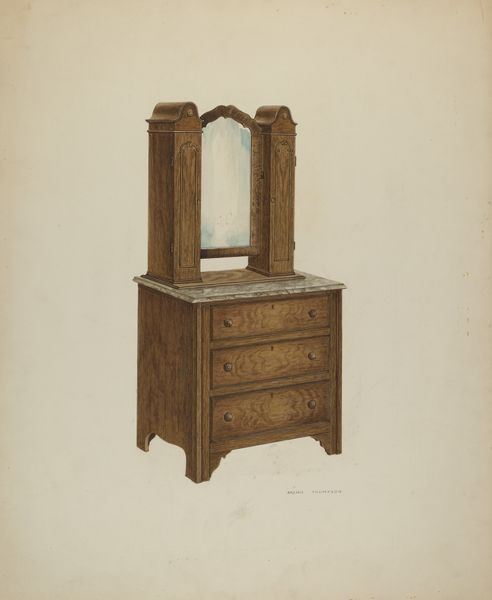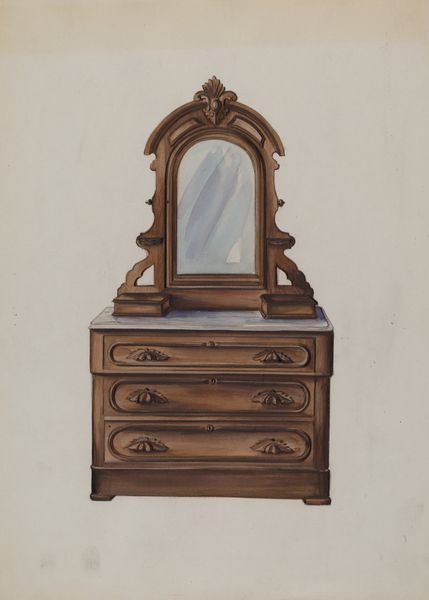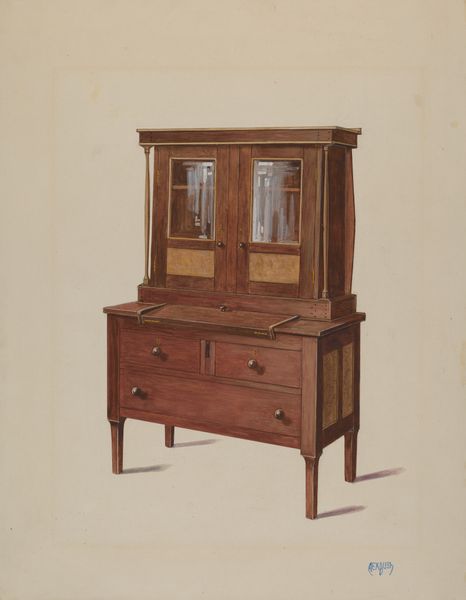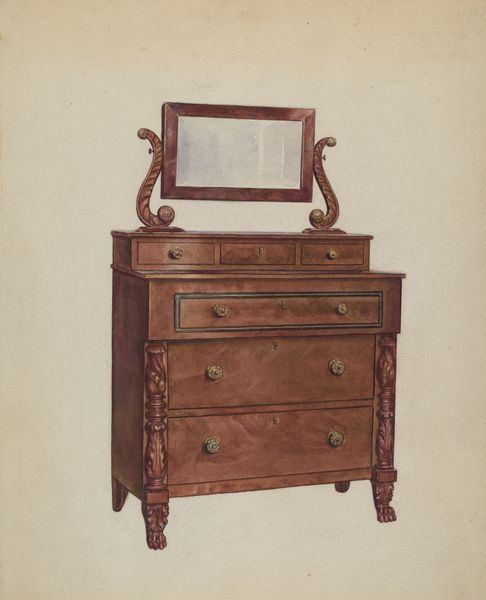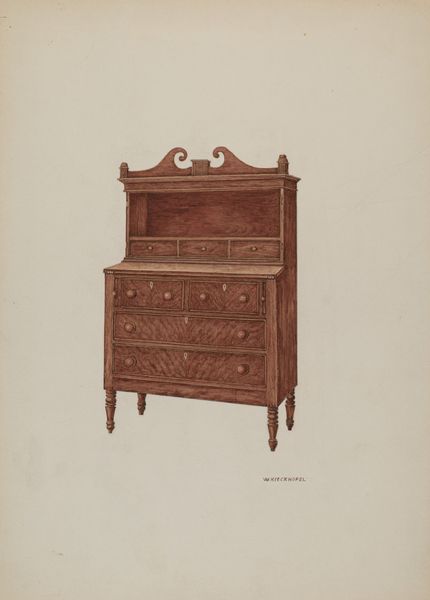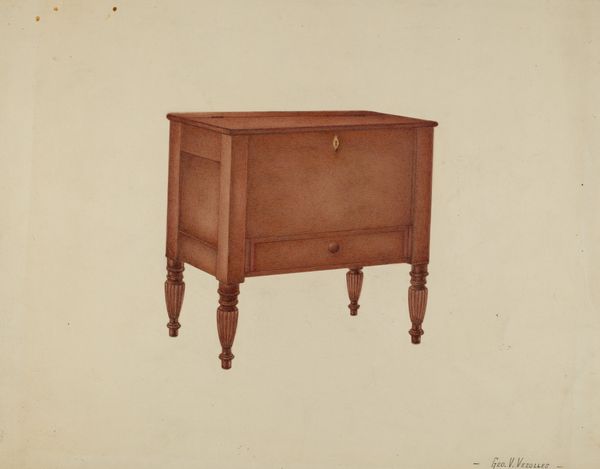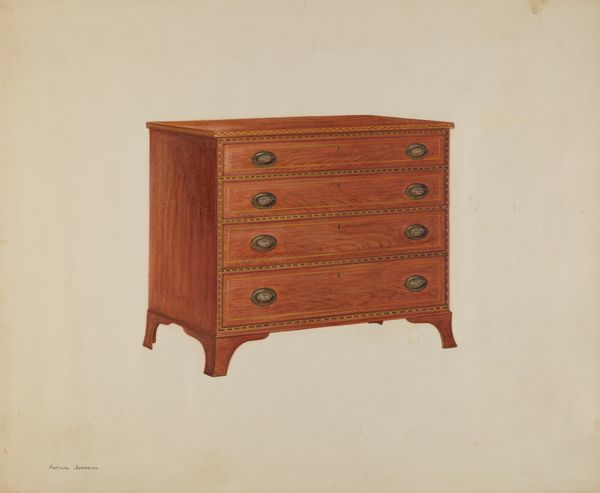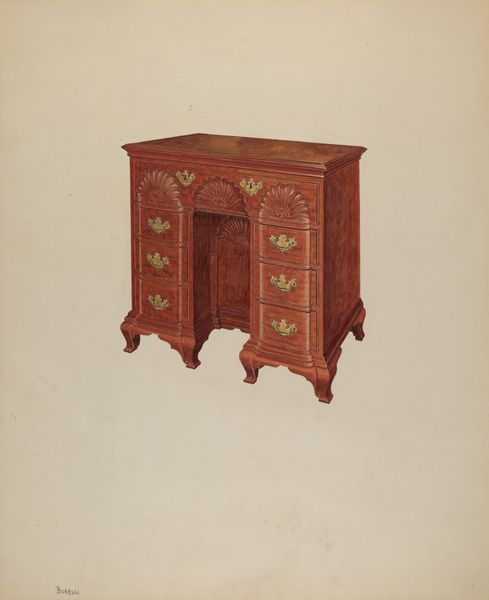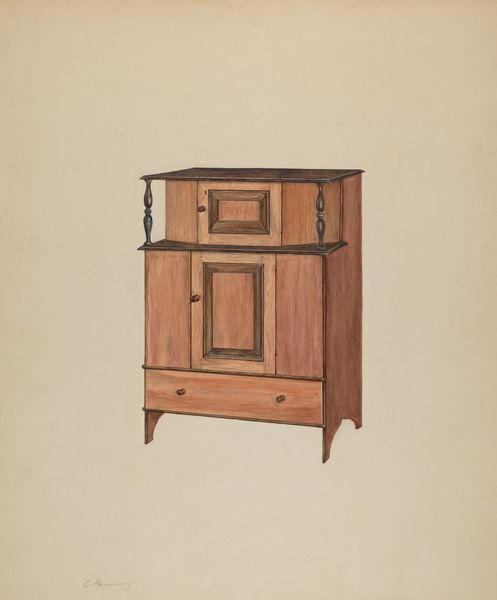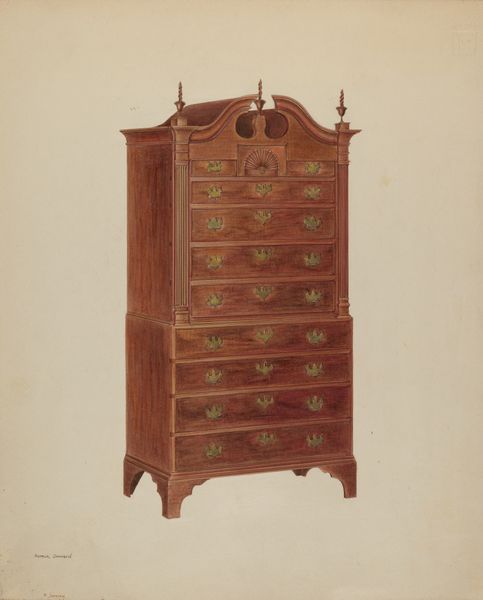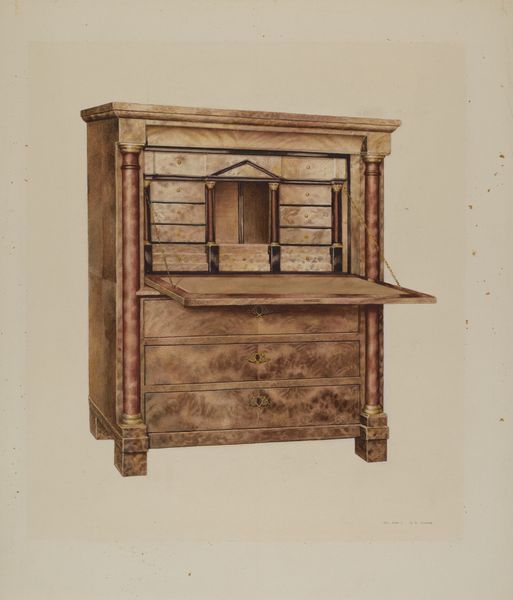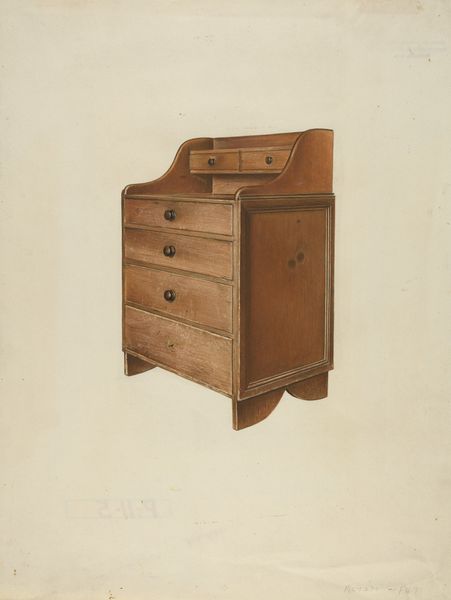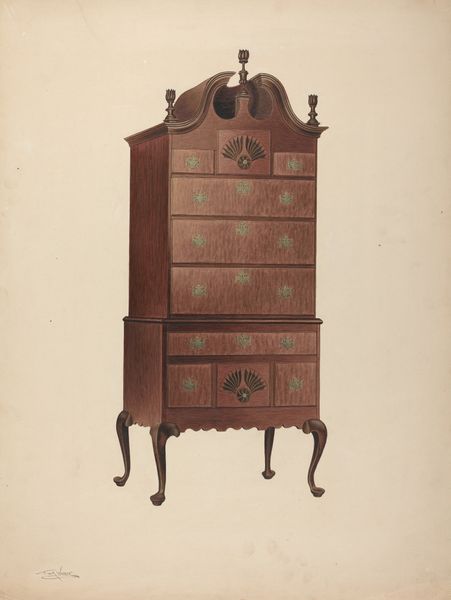
drawing, watercolor
#
drawing
#
watercolor
#
watercolour illustration
#
charcoal
#
watercolor
Dimensions: overall: 35.5 x 24.1 cm (14 x 9 1/2 in.) Original IAD Object: none given
Copyright: National Gallery of Art: CC0 1.0
Curator: Here we have Geoffrey Holt’s “Dresser with Marble Top,” a watercolor and charcoal drawing dating from about 1937. What are your first thoughts? Editor: It's an illustration of a functional object that has a life beyond aesthetics. The texture—how it’s rendered to feel so wooden, and heavy even through watercolour— that draws me in immediately. You can imagine the maker crafting the ornate details. Curator: It’s interesting you key into the craft. During the 1930s, representations of domesticity were so intertwined with ideas of economic stability. This isn’t just a dresser, it is loaded with meaning and status. Editor: Right. And think about marble for a moment. It has this association with permanence and luxury, but here it's just a surface. What’s beneath matters too; what is concealed? How did access to these materials reflect class divisions? The image sparks that question. Curator: Precisely. How would such an object circulate? Was it intended to celebrate craft during a period of mass production? Holt's rendering invites us to consider this tension. Editor: The artist even leaves traces of their hand. Charcoal, watercolor— it becomes about process and less about polished product. Look at those carved details on the drawer fronts. They suggest an almost unbearable labor and artistic expression. Curator: The fact that Holt chose to represent it this way elevates furniture from mere commodity to an object worthy of artistic consideration. Editor: And worthy of our social examination as well, showing how it reflects a whole network of labour. This quiet illustration starts asking uncomfortable questions about who benefits from this material world. Curator: Agreed. It challenges us to think about not just the style, but the social underpinnings of everyday design choices. Editor: A simple piece becomes rather monumental, in a way. It stays with you.
Comments
No comments
Be the first to comment and join the conversation on the ultimate creative platform.
